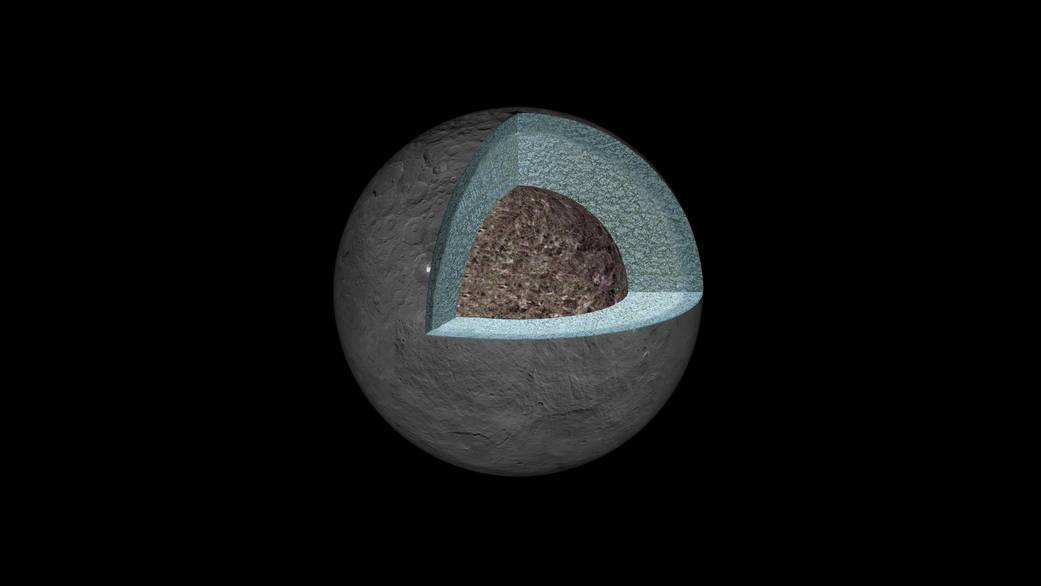This artist’s concept shows a diagram of how the inside of Ceres could be structured, based on data about the dwarf planet’s gravity field from NASA’s Dawn mission.
Using information about Ceres’ gravity and topography, scientists found that Ceres is “differentiated,” which means that it has compositionally distinct layers at different depths. The densest layer is at the core.
This research teaches scientists about what internal processes could have occurred during the early history of Ceres. It appears that, during a heating phase early in the history of Ceres, water and other light materials partially separated from rock. These light materials and water then rose to the outer layer of Ceres.
Dawn’s mission is managed by JPL for NASA’s Science Mission Directorate in Washington D.C. Dawn is a project of the directorate’s Discovery Program, managed by NASA’s Marshall Space Flight Center in Huntsville, Alabama. UCLA is responsible for overall Dawn mission science. Orbital ATK Inc., in Dulles, Virginia, designed and built the spacecraft. The German Aerospace Center, Max Planck Institute for Solar System Research, Italian Space Agency and Italian National Astrophysical Institute are international partners on the mission team. For a complete list of mission participants, visit:
http://dawn.jpl.nasa.gov/mission
More information about Dawn is available at the following sites:
Credit: NASA/JPL-Caltech/UCLA/MPS/DLR/IDA/





























